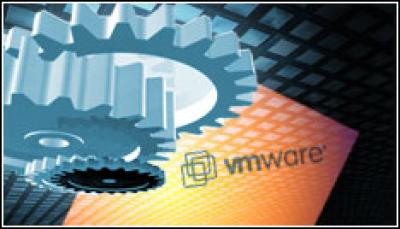VMWare Keeps Head Above Water For Now

An increasingly tight market means the virtualisation software leader expects sales to be flat or even to drop in the second quarter of 2009
Virtualisation software market leader VMware has managed to stay ahead of a stubborn worldwide recession, reporting in an earnings call on April 22 an increase of 7 percent in its overall revenues and a 62 percent increase in net income for the first quarter of 2009.
VMware, 84 percent of which is owned by storage giant EMC, also reported a profit of $60 million, or 18 cents per share, up from $43 million (£30m) and 11 cents per share in the first quarter of 2008. The company has banked a bit more than $2 billion in cash on hand, to go with $917 million in deferred revenue.
However, VMware executives warned that because of an increasingly cost-conscious market, they expected sales to be flat—or even lower—in the second quarter, compared with the second quarter of 2008.
In July 2008, VMware reported second-quarter sales of $456.2 million (£313m) —well below the $500 million that analysts are expecting for the current quarter. The company’s revenue forecast sent its stock price down about 15 percent to under $29 in after-hours trading.
Overall, VMware’s revenues for the first quarter were $470.3 million (£323m), an increase of 7 percent from the first quarter of 2008. The increase was led by the company’s services and maintenance revenues of $213 million, up 48 percent over the previous year, CFO Mark Peek told a telephone conference of investors, analysts and journalists.
However, VMware took a hit on licensing income, banking 13 percent less than a year ago at $257 (£176m) million.
The company’s business mix is shifting along with the economy, Peek said, with services revenue comprising 45 percent of total revenues, compared with 33 percent in the first quarter of 2008. Services revenue comes mostly from ongoing maintenance involving previously licensed deployments.
“Customers have little appetite for any CAPEX [capital expense] outlays for new projects. Although virtualisation has a high ROI … it is frequently accompanied by hardware purchases and professional services engagements,” Peek said.
VMware President and CEO Paul Maritz said during the call that VMware added 11,000 new customers and that “austerity measures” to keep operational costs in line were key factors in the company’s success in the first quarter.
“While there are some people promising signs of renewed life [in the economy] in the United States, customers maintaining a tight rein on any new spend[ing],” Maritz said. “If there is a bright spot anywhere, it is likely to be confined in the very near term to the federal sector. The government has money and is spending it.
“However, Europe, in particular, remains depressed; Asia is more promising, but we’re still investing there. While our growth will be good on a relative basis, it will be small on an absolute basis, given from where we are coming.”
VMware’s domestic revenues for the first quarter grew 8 percent to $244.1 million from the first quarter of 2008. International revenues improved 6 percent to $226.2 million from the first quarter of 2008.
VMware on April 21 launched a major product refresh of its front-line ESX virtualization server, changing the name to vSphere 4.